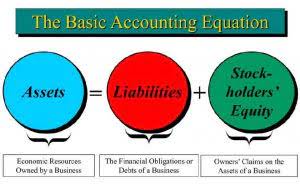
An asset in good condition is likely to have a higher salvage value compared to one that is damaged or in poor condition. The better the condition, the more valuable the asset is likely to be in the salvage market. Salvage value and depreciation are both accounting concepts that are related to the value of an asset over its useful life. Hence, a car with even a couple of miles driven on it tends to lose a significant percentage of its initial value the moment it becomes a “used” car. Briefly, suppose we’re currently attempting to determine the salvage value of a car, which was purchased four years ago for $100,000.

Salvage Value – A Complete Guide for Businesses
Investors use salvage value to determine the fair price of an object, while business owners and tax preparers use it to deduct from their yearly tax liabilities. Depreciation measures an asset’s gradual loss of value over its useful life, measuring how much of the asset’s initial value has eroded over time. For tax purposes, depreciation is an important measurement because it is frequently tax-deductible, and major corporations use it to the fullest extent each year when determining tax liability. With a large number of manufacturing businesses relying on their machinery for sustained productivity, it is imperative to keep assessing the equipment they own. Constant use and other factors like the nature and quality of these assets cause a continual deterioration. Salvage value is defined as the book value of the asset once the depreciation has been completely expensed.
- Both declining balance and DDB methods need the company to set an initial salvage value.
- We can also define the salvage value as the amount that an asset is estimated to be worth at the end of its useful life.
- Another example of how salvage value is used when considering depreciation is when a company goes up for sale.
- Businesses should periodically reassess the after-tax salvage value of their assets, especially when there are significant changes in tax regulations or market conditions that may impact asset values.
- An asset’s salvage value subtracted from its basis (initial) cost determines the amount to be depreciated.
- In the end, though, MACRS results in the same net depreciation as you would receive under the straight-line method.
Placed In Service Date for MACRS Purposes

Calculating the after-tax salvage value allows businesses to incorporate a more accurate value into their financial statements, ultimately providing a clearer picture of their assets’ worth. A property’s recovery period is the number of years it takes to recover its cost or other basis through depreciation. For calculating the tax deduction to take under the MACRS depreciation formula, it’s also important to understand the different timing conventions used when placing property into service. These conventions help determine the portion of the year to depreciate property in both the year the property is placed in service and the year it is taken out of service. However, in the end, https://www.instagram.com/bookstime_inc the total depreciation taken is the same between the three methods. Certain intangible property, such as patents, copyrights, and computer software, qualify for depreciation, too.
- Resale value is a similar concept, but it refers to a car that has been purchased, rather than leased.
- In addition, the cost to dispose of the asset may become more expensive over time due to government regulation or inflation.
- Market value estimation is a lot more dynamic and market-driven approach to determining the salvage value.
- Salvage value plays a crucial role in determining the worth of an asset at the end of its useful life.
- The current machinery, after years of service, is approaching the end of its useful life.
Fixed Asset Salvage Value Calculation Example (PP&E)
One method of determining depreciation involves considering the asset’s salvage value. The salvage value is the estimated residual value of the asset at the end of its useful life. Salvage value, also known as residual value or scrap value, is a fundamental concept in accounting and asset management. It refers to the estimated value that an asset will have at the end of its useful life. This figure is critical for businesses as it plays a key role in several financial processes, including the calculation of depreciation, asset replacement planning, and overall financial strategy.

However, calculating salvage value helps all companies estimate how much money they can expect to get out of the asset when its useful life expires. Say your carnival business owns an industrial cotton candy machine that costs you $1,000 new. Calculating depreciation with consideration of the salvage value ensures that the asset’s cost is accurately spread over its useful life. This provides a true reflection of the asset’s value and helps in presenting a more accurate financial position of the company. It is is an essential component of financial accounting, allowing businesses to allocate the cost of an asset over its useful life.
Salvage Value vs. Depreciation
Net present value (NPV) is a technique used in capital budgeting to find out whether a project will how to calculate after tax salvage value add value or not. It involves finding future cash flows of an option and discounting them to find their present worth and comparing it to the initial outlay required. Yes, if the sale of an asset results in a loss and taxes are paid on that loss, the after-tax salvage value can be negative.
To estimate salvage value, a company can use the percentage of the original cost method or get an independent appraisal. The percentage of cost method multiplies the original cost by the salvage value percentage. Tax exemptions on asset sales may vary depending on specific tax laws and jurisdictions. It is essential to consult with tax professionals or accounting experts to determine any applicable exemptions.
How to Calculate After-Tax Real Interest Rate
The concept helps in understanding how much value an asset retains over time and is critical in determining the annual depreciation expenses for financial reporting. It represents the amount that a company could sell the asset for after it has been fully depreciated. On the other hand, book value is the value of an asset as it appears on a company’s balance sheet. It is calculated by subtracting accumulated depreciation from the asset’s original cost.

Examples of ADS recovery periods for certain types of property are included in the table below (again, exceptions might apply). You must also know the property’s basis for depreciation to calculate your depreciation deduction using MACRS. If property held for personal use is later converted to business use or for the production of income, then the conversion date is the placed in service date for MACRS depreciation. You can start depreciating property when it’s placed in service https://www.bookstime.com/ for use in a trade or business or for the production of income. Property is placed in service for MACRS purposes on the date it’s ready and available for a specific use.

